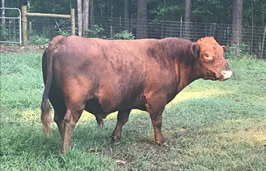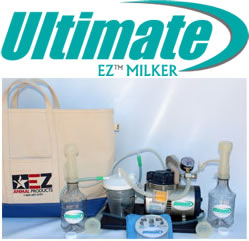Belle Fourche cattle are selected and priced by their conformation, and our estimate of reliability.
For example; say we have two heifers of similar conformation:
Heifer #1 has generations of excellent conformation, we know the line and have owned it for maybe 8 generations, and have not had any bad udder surprises, bad dispositions, or surprise hoof, leg, or hip weaknesses.
Heifer #2 is a out of a decent cow from outside bloodlines, and sired by one of our best bulls. The dam had some weaknesses which appear to be corrected by the sire, as they are not apparent in this heifer. We have not seen the maternal grandparents.
In this case, we will always price Heifer #1 higher. We do not care if Heifer #2 is homozygous red, homozygous dun, homozygous polled and homozygous for A2, A3, A4 milk, or whatever other test has recently come on the market. We simply do not know as much about this animal as we know about Heifer #1.
How do we decide what bulls to keep intact?
As far as deciding which bulls will be breeding bulls, here is our process.
1. Select bull calves from the very best cows. These cows are “Queen Mums.” They must be excellent and consistent producers, and have the best udders in the herd. This means certain cows are designated as being potential bull producers and other ones are not. Since this process has been used for many generations, our herd sires are from the best udder lines; so udder selection for the sire’s side has already been done. (For this reason, we seldom keep bull calves from outside A.I. bulls, and only when there is a documented udder history, or we have experience with a number of freshened heifers from this bull. We do not rely on the phrase “Good udder bull” as it could mean anything.*)
2. Look at soundness, and the traits that go with it. Typically, feet and legs are where most bull calves fail this cut, (i.e. cow hocked, sickle hocked, toed out, lacking heel, poor hoof angle, long or splayed toes, improper wear, back at the knee, or too much hip slope). We have also bred-out bloodlines where recessed tail heads and/or “early” tail sets are common. (We consider this type of tail set to be a structural defect as it creates an unhygienic slope between the anus and the vulva in a cow.)
3. Finally, we look at production characteristics. Examples are: length of hip, hook to pin length, body length, depth, rib spring, etc. We like width between the hind legs as it gives the animal more substance, a wider stance, and the females will have a wider rear udder attachment and also be easier to milk. A lot of herd selection practices jump to our Step 3 without looking at our Step 1 and Step 2, which is why the breed has so many A.I. bulls who consistently throw bad udders, bad feet, or sloping back end. A bull with bad feet shouldn’t have been a bull. It should not matter how “big and beefy” he is!
So, in our herd, a bull qualifies to be a bull in 3 steps, one by virtue of his dam, and the other two by virtue of his soundness and production characteristics. We have not ignored the sire of the calf; but, because all our bulls have gone through this process for many generations, the sire has already gone through this same selection, as has the sire’s sire, etc. . . .
A footnote:
*Remember, this is a dual purpose breed; most Dexter registries interpret that to mean 50% of selection should be on dairy characteristics, don’t forget the udder history when selecting an A.I. bull!



I am looking to add some Dexter heifers to my meat goat ranch. I have no idea what quality Dexter heifers would cost. I am looking at buying two female calves and have them AI when old enough. What can I expect to pay for these calves? Thank you. RIVER BARON RANCH
The top animals are relatively inexpensive in the Dexter breed, when you compare to the prices of animals in the top 5%-10% in other registered cattle breeds.
Sometimes, if you know what to look for, you might be able to find a good Dexter priced for less than other, lesser-quality animals in the same herd. This is because so many Dexter breeders do not price by conformation and will price the animals based on DNA tests for traits like coat color or polled. In these cases, you may be able to purchase the best-conformed animal in the herd, and it may be discounted because it is horned and black. But you have to know what to look for and really study-up on cattle conformation. And, you could still get a nasty surprise on the udder, or the udders it produces on its progeny. Plus, there can always be surprises in disposition, especially when you start working with the animal.
Some breeders specialize in producing top quality conformation. This has largely occurred through selective breeding, which means significant culling has occurred in past generations. Dexters from these herds usually start at about $3,000 and go up to about $7,500, depending on age, breeding status, bloodlines, etc. When you buy these high quality animals from established herds, you are effectively buying time, since you will not have to go through generations of selection to “fix” problems that are otherwise common in the breed, such as weaknesses in udders and feet.